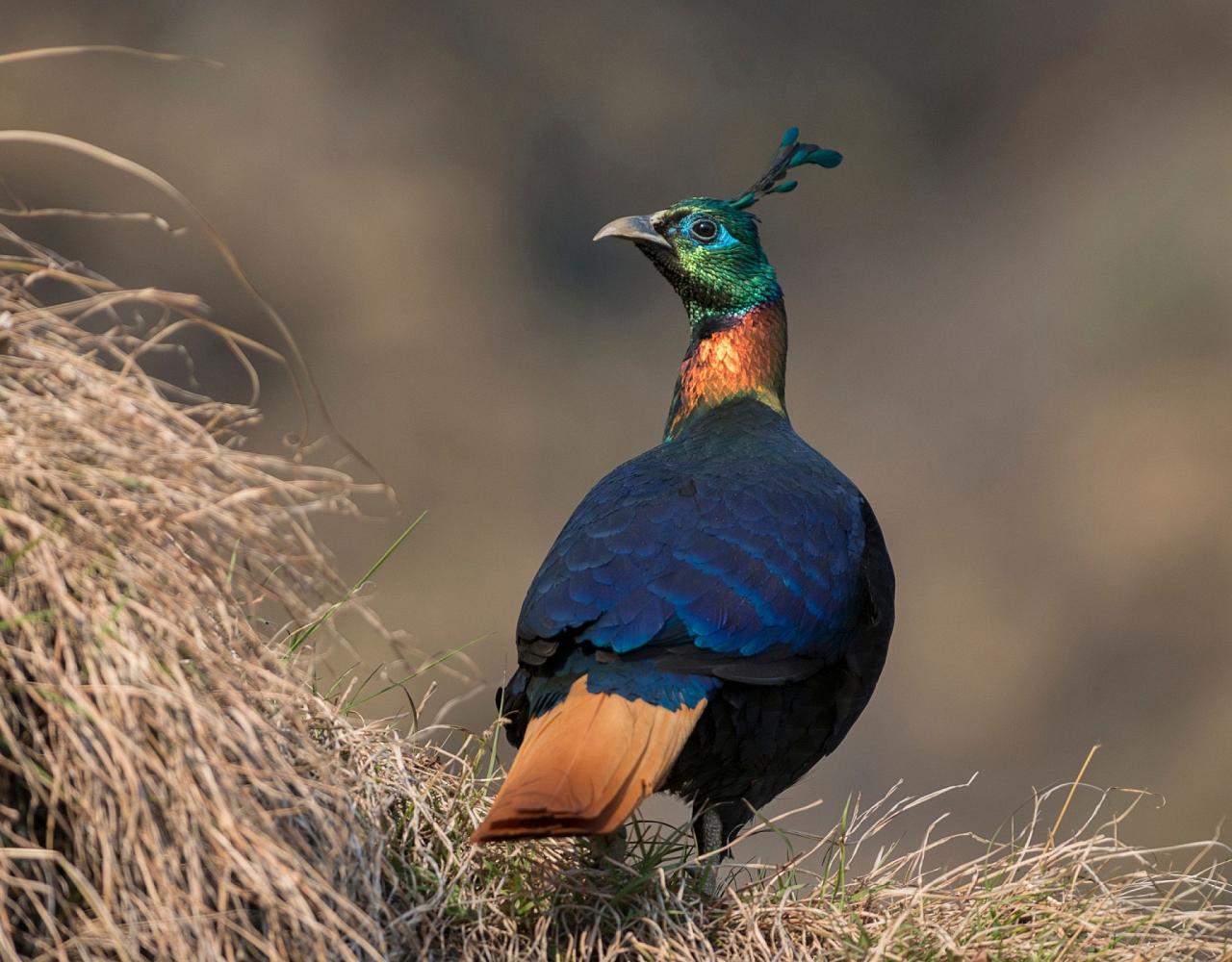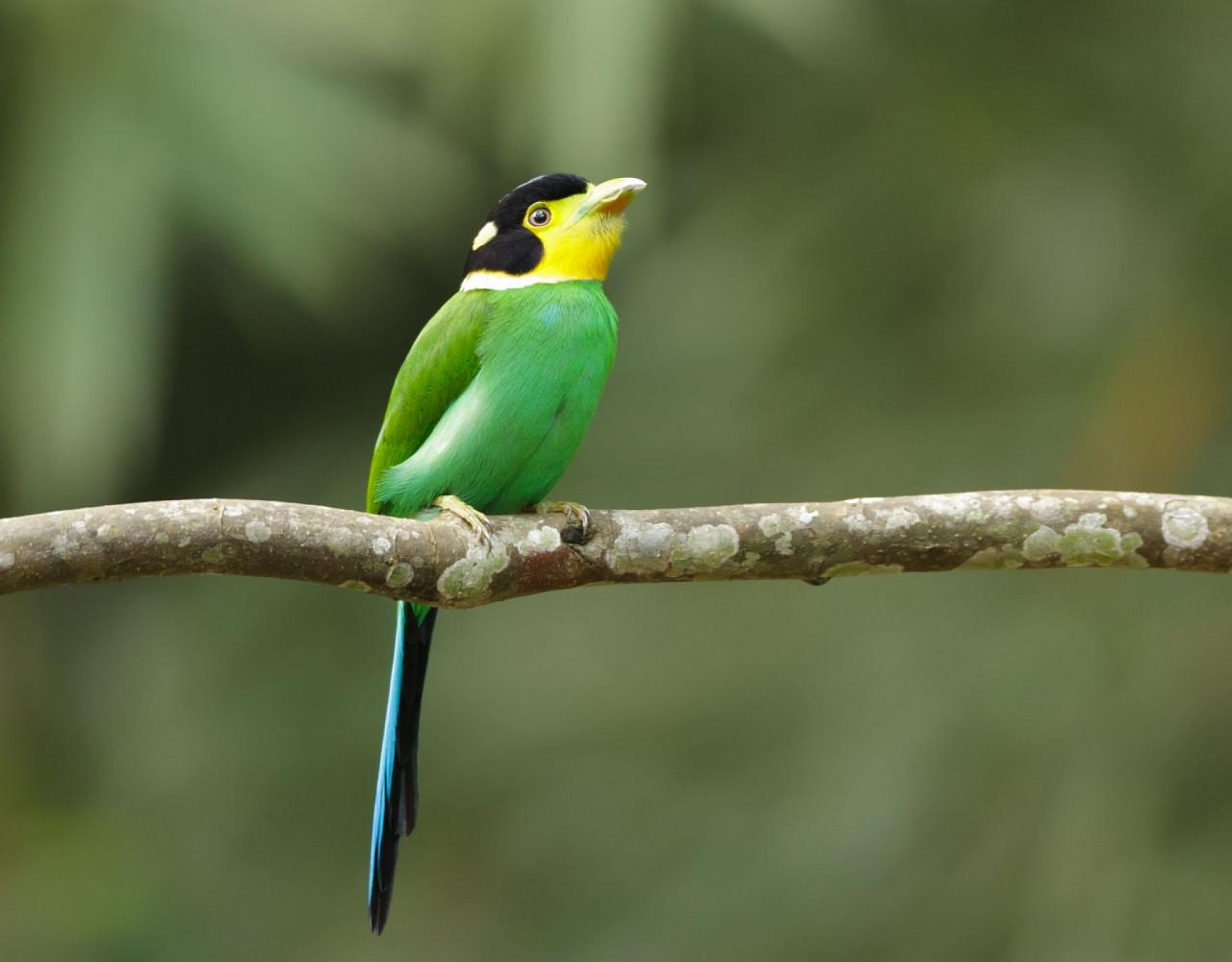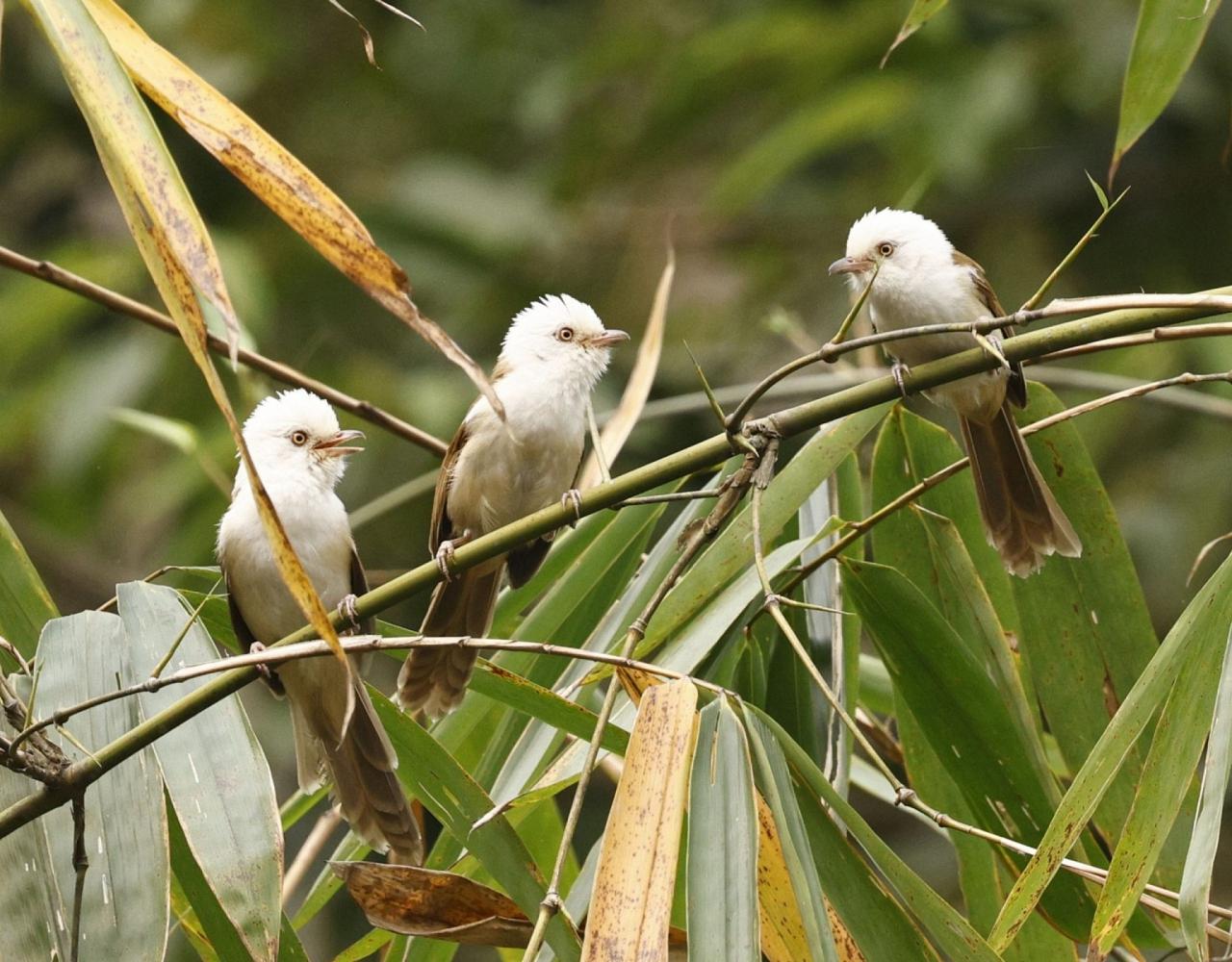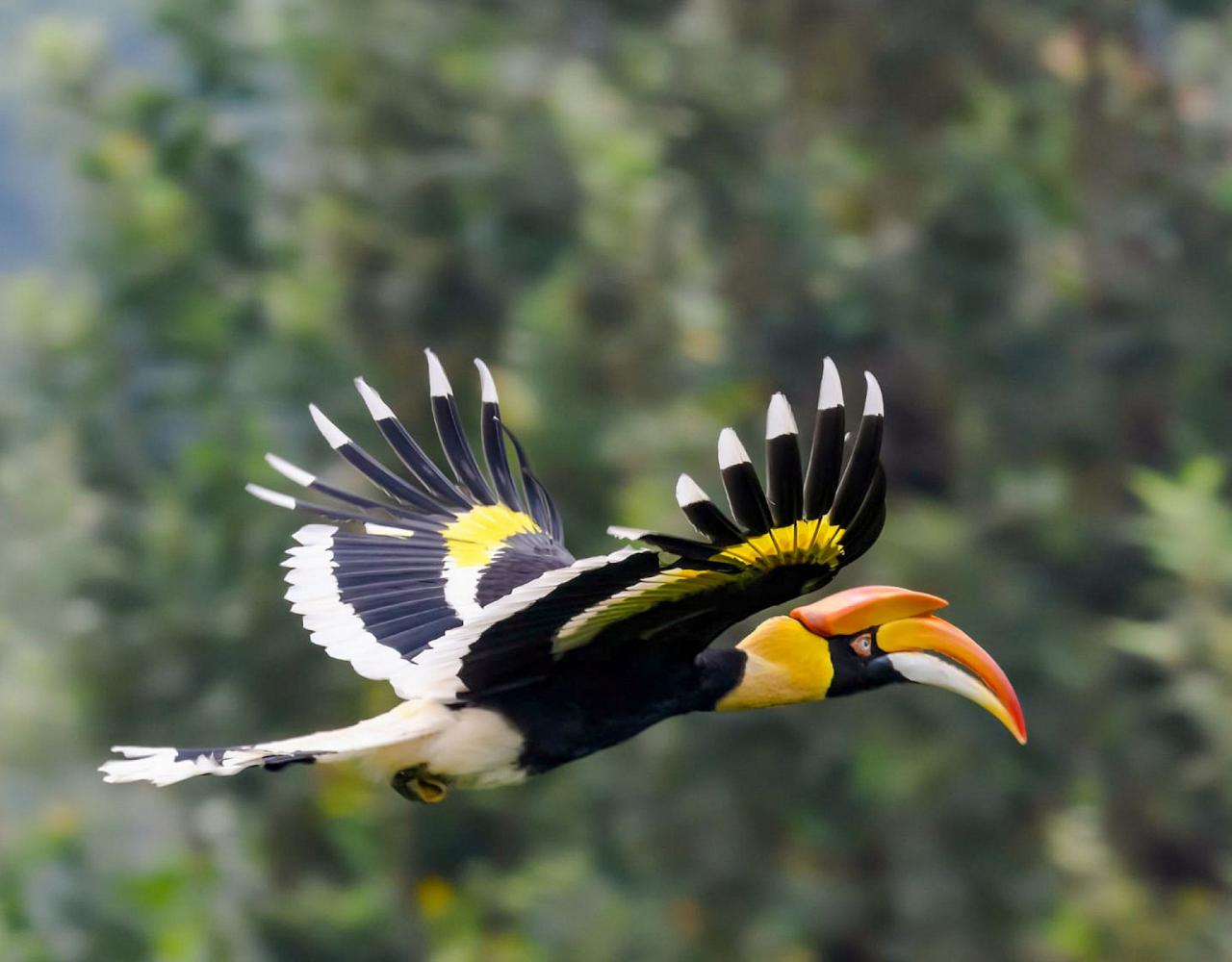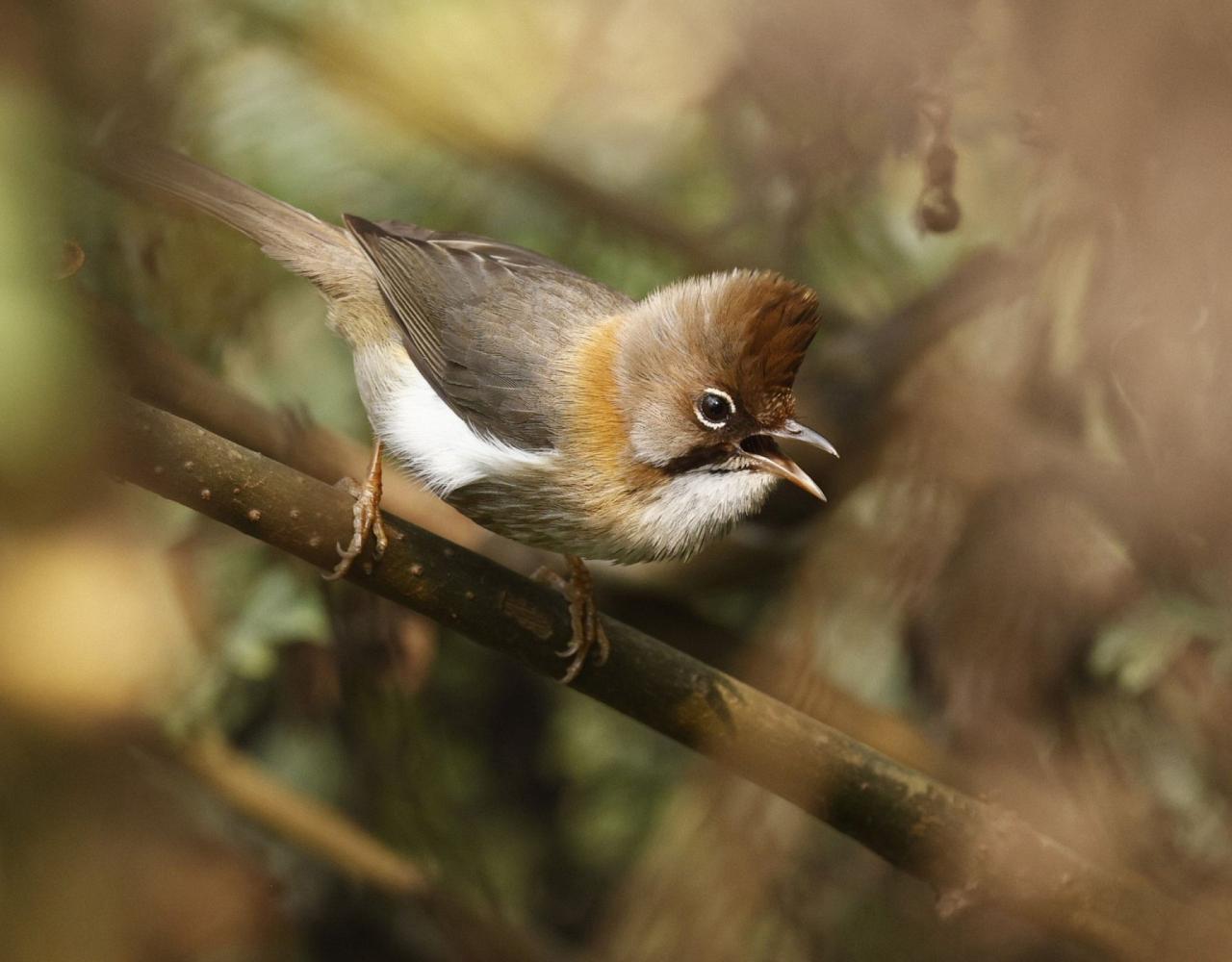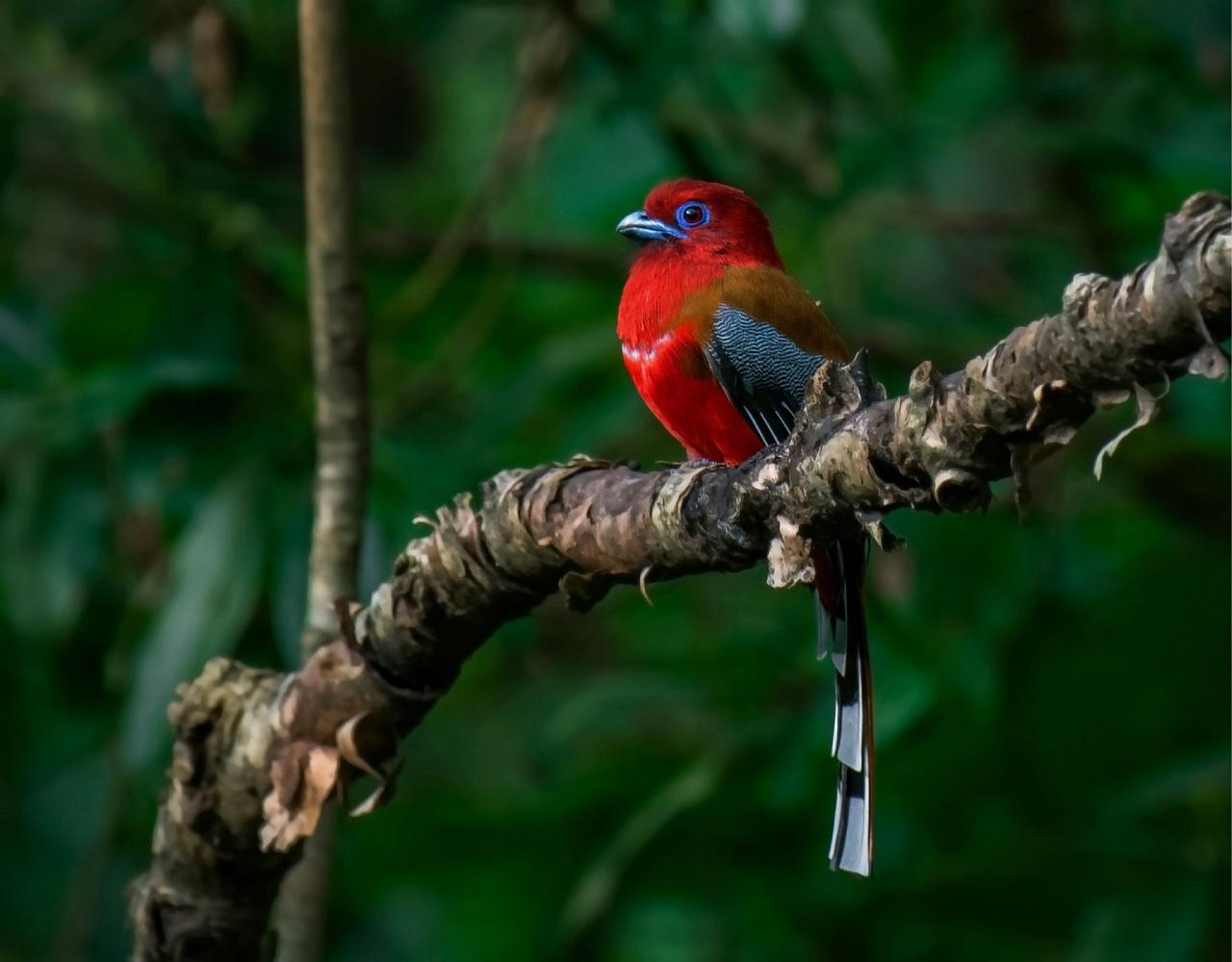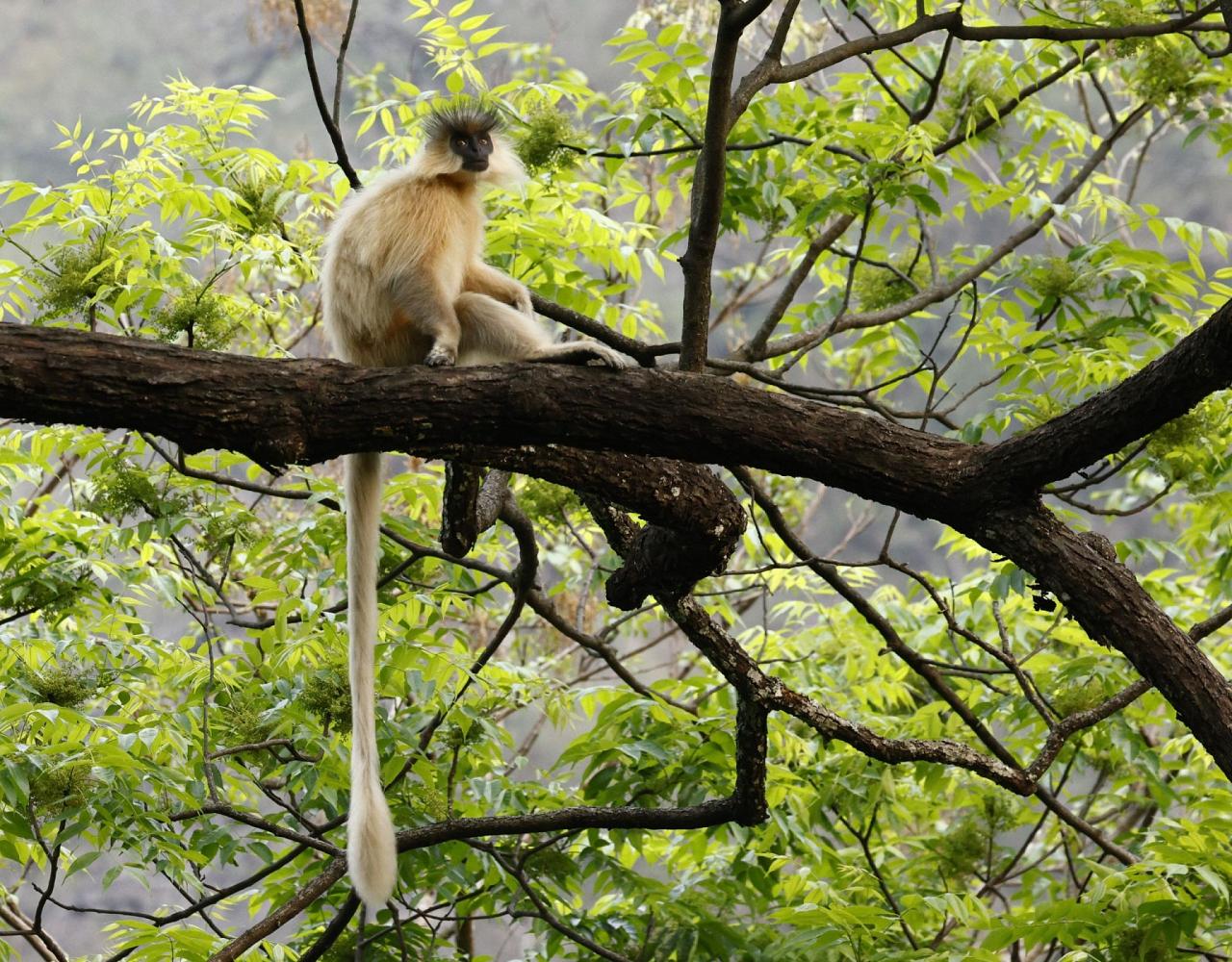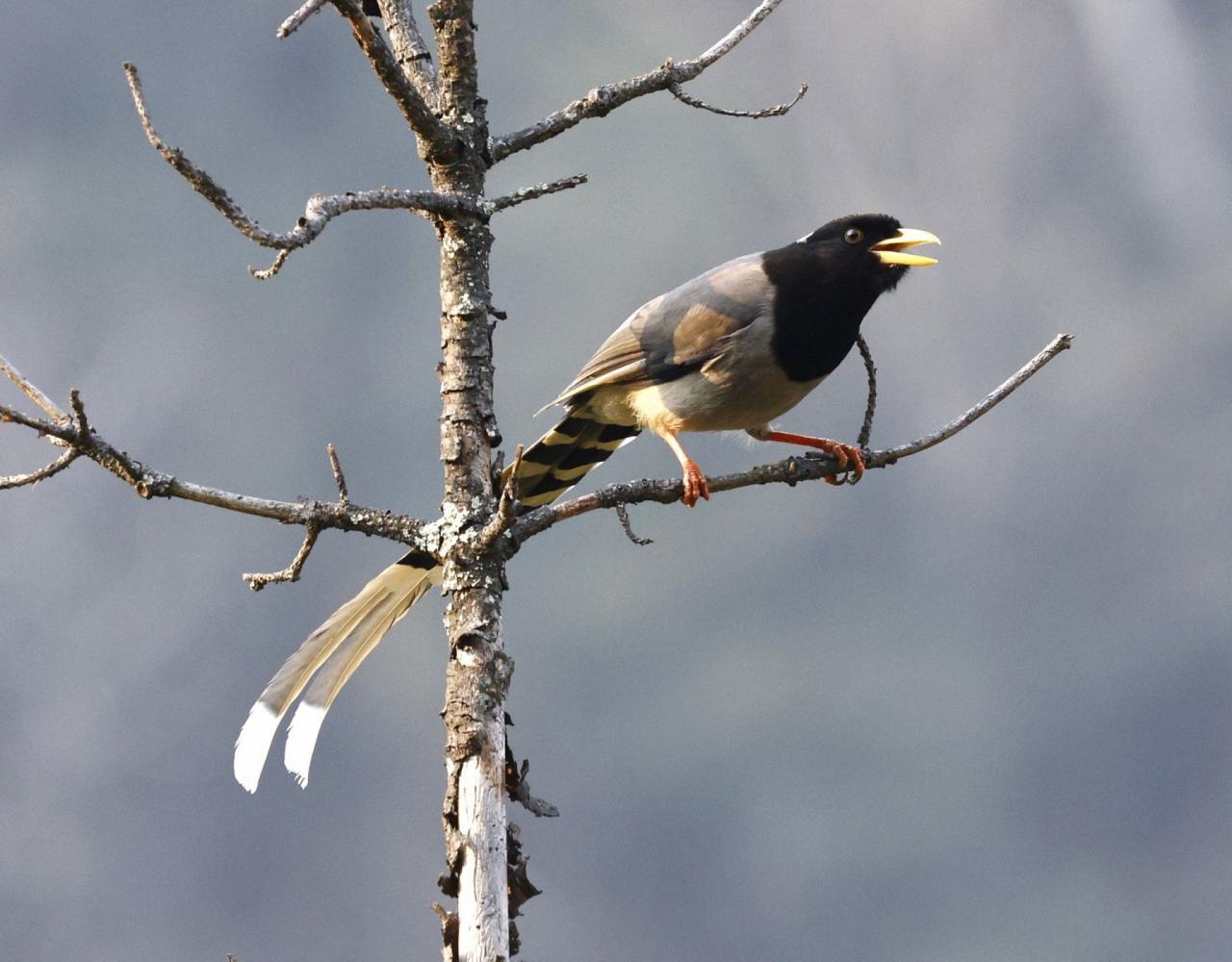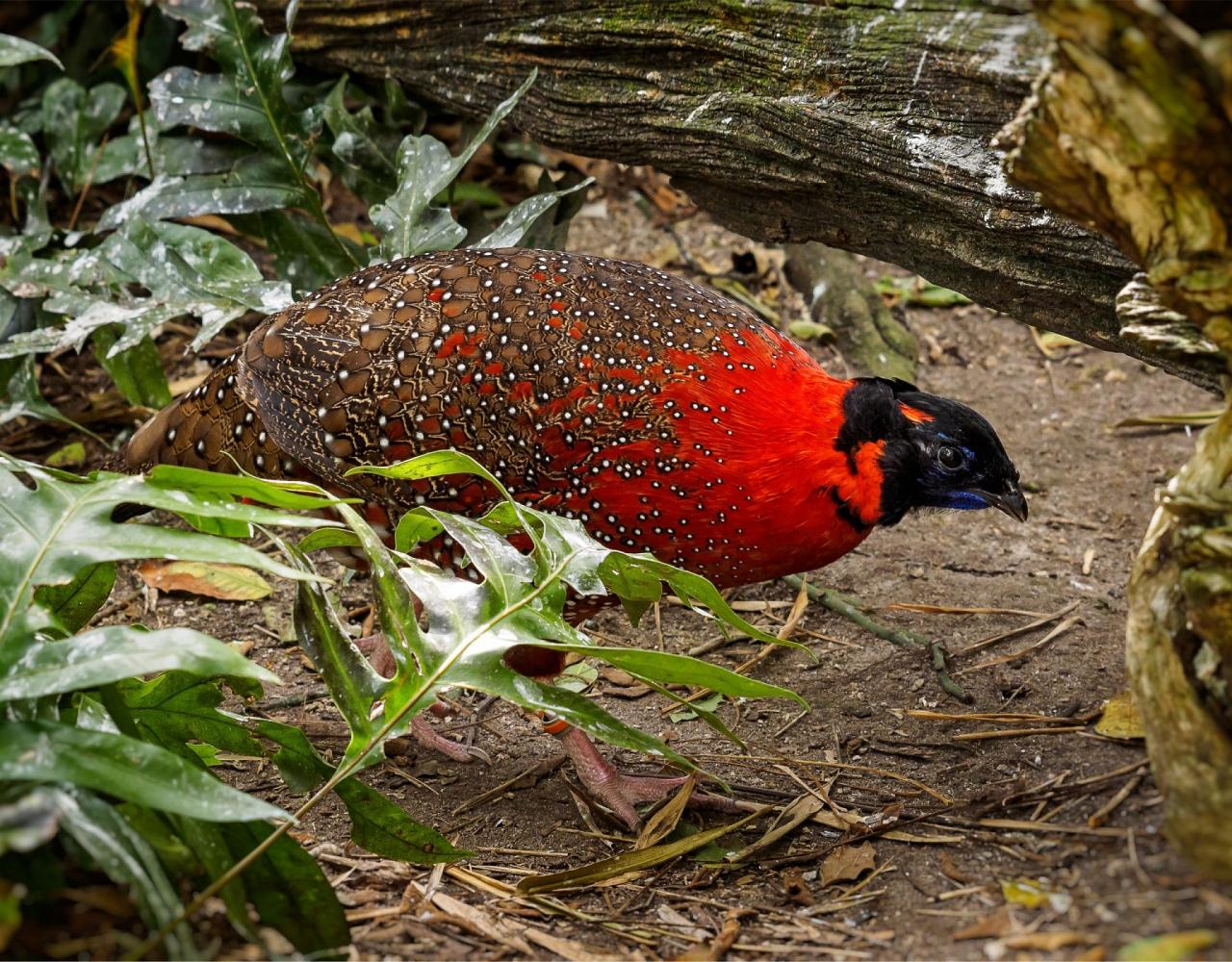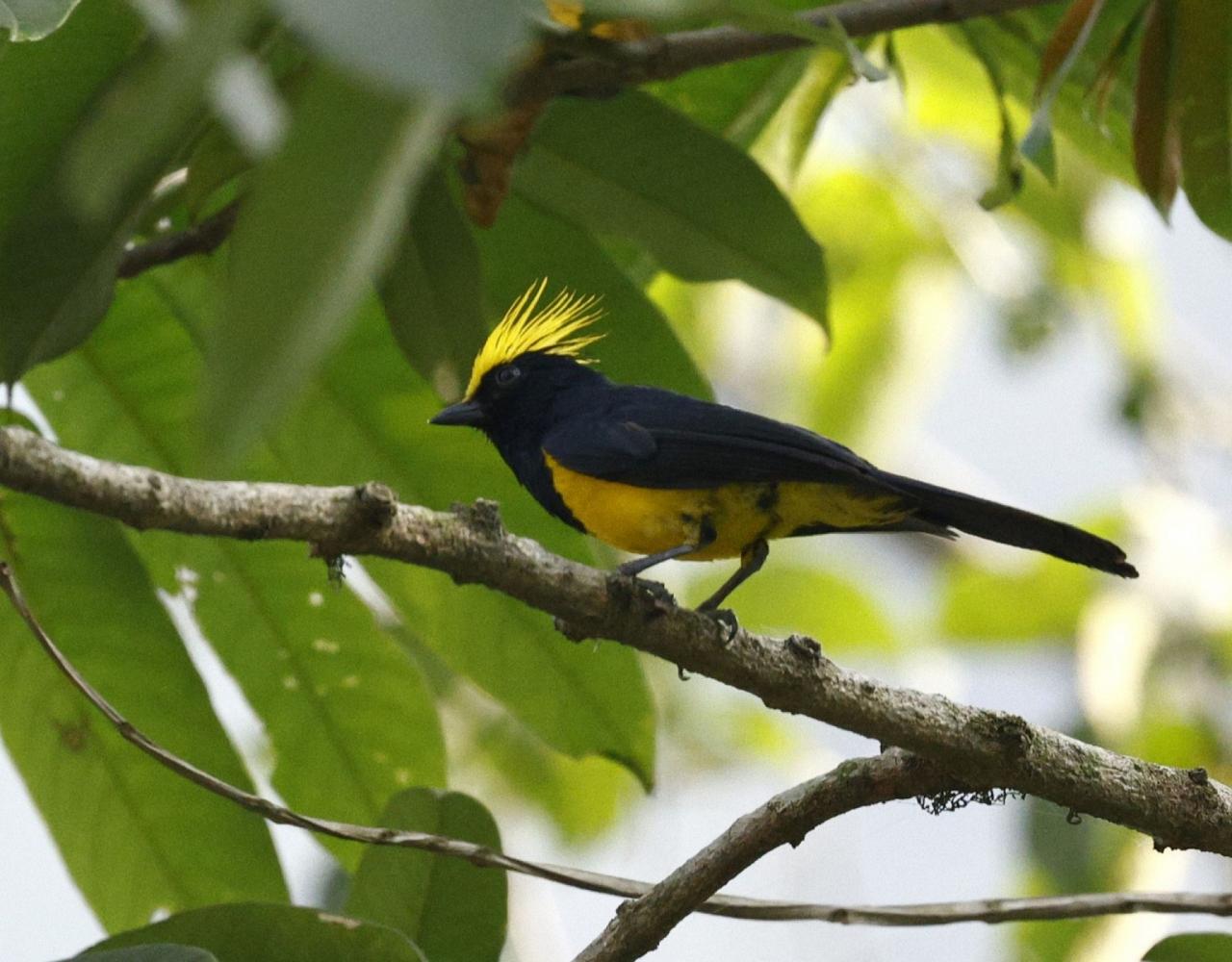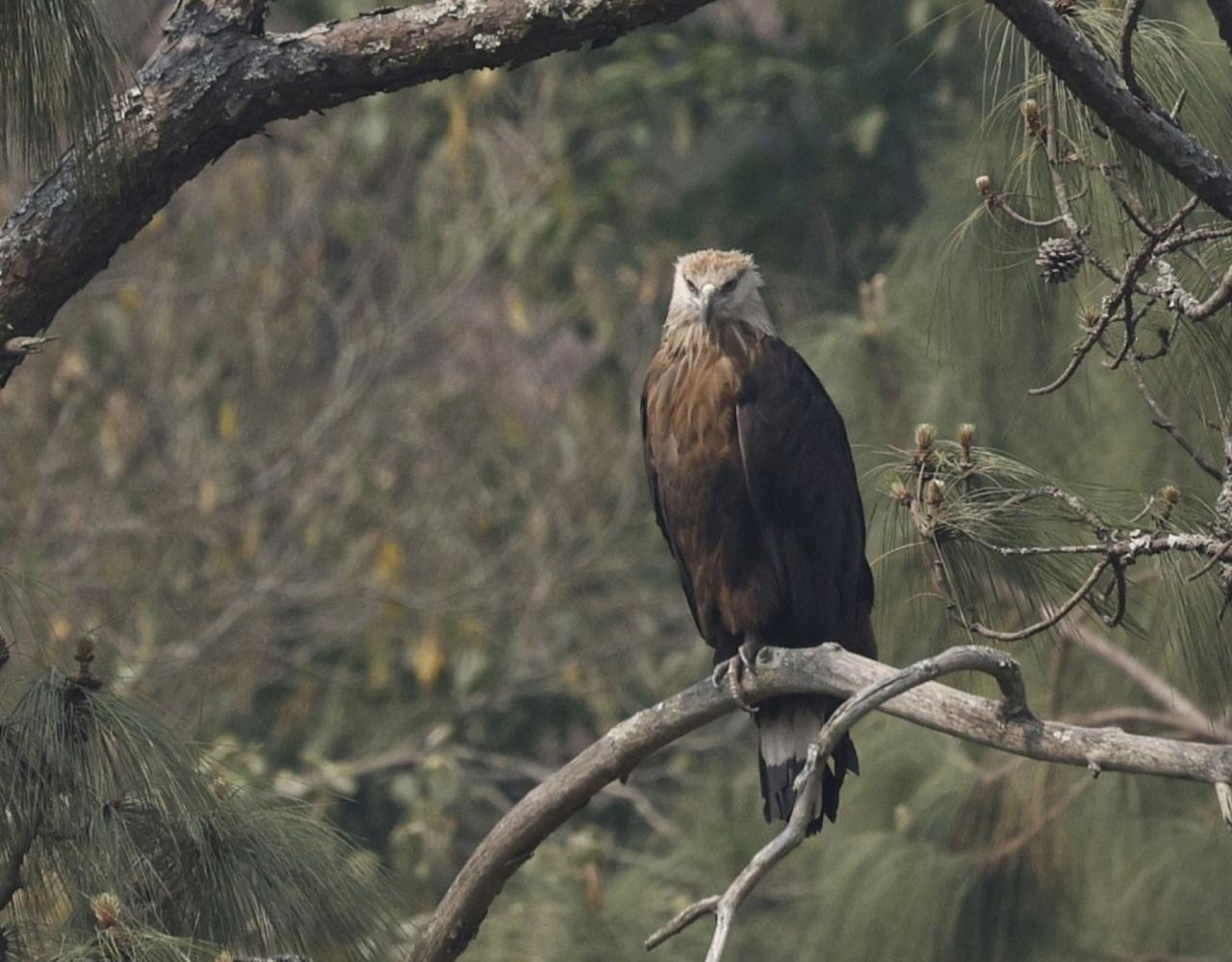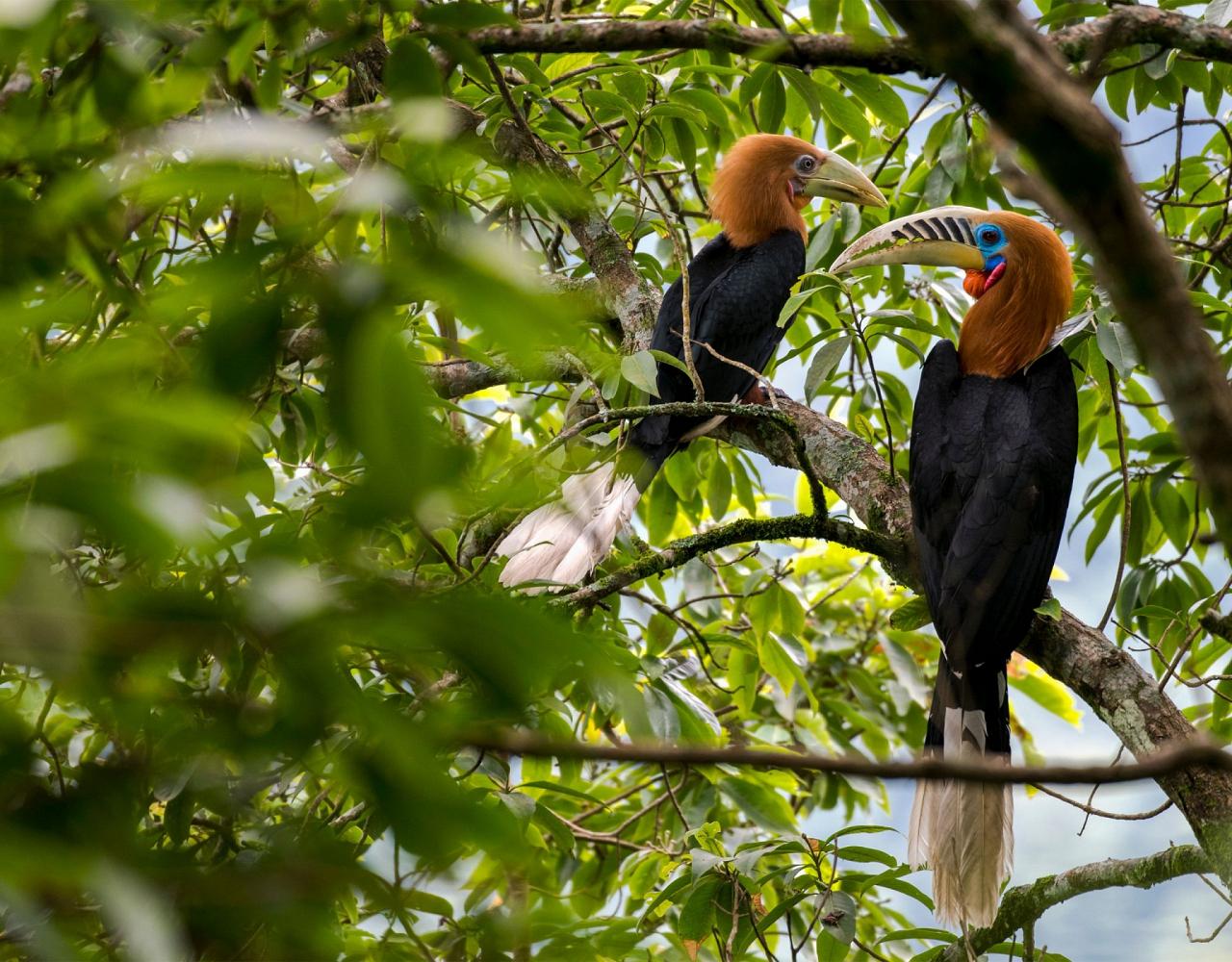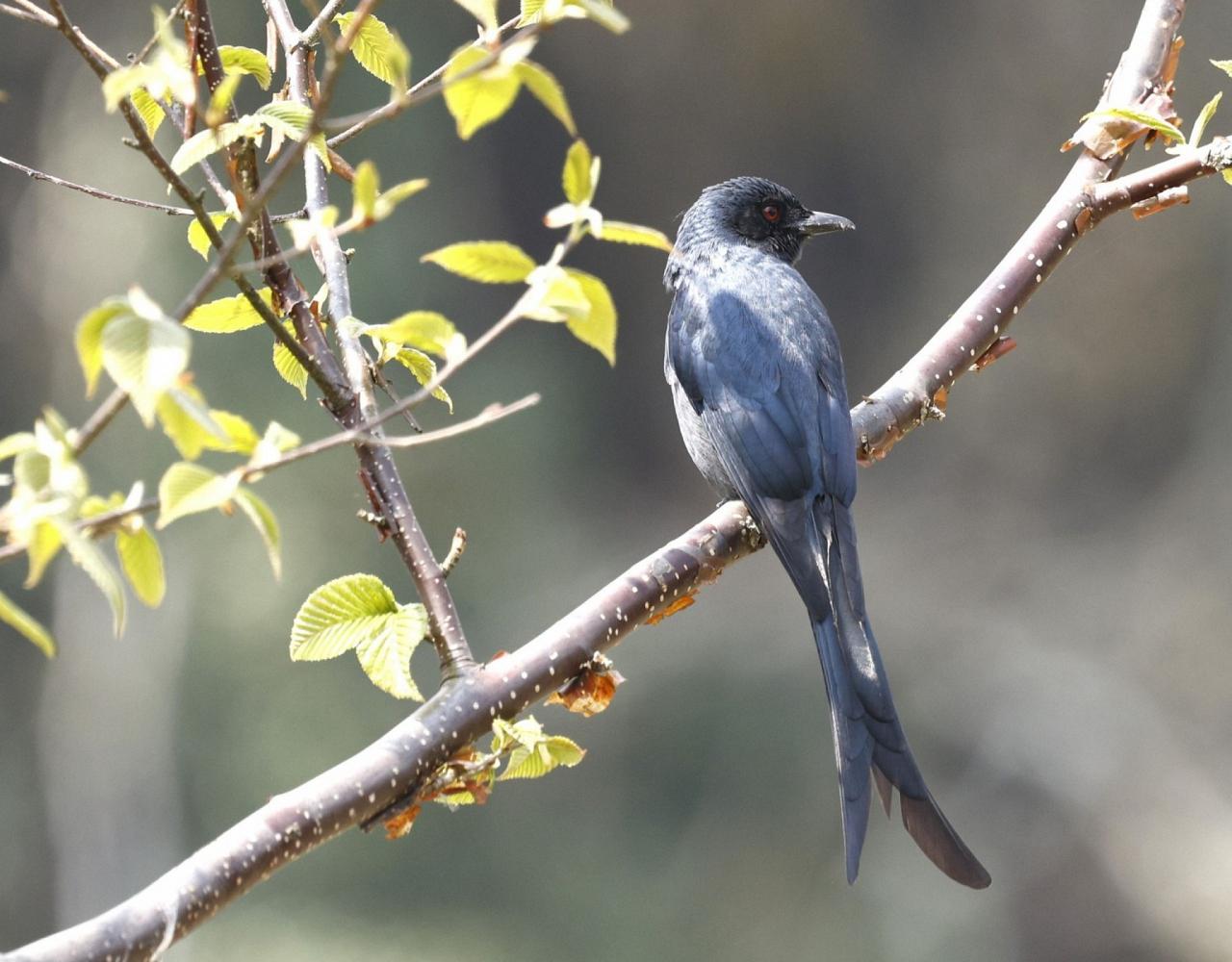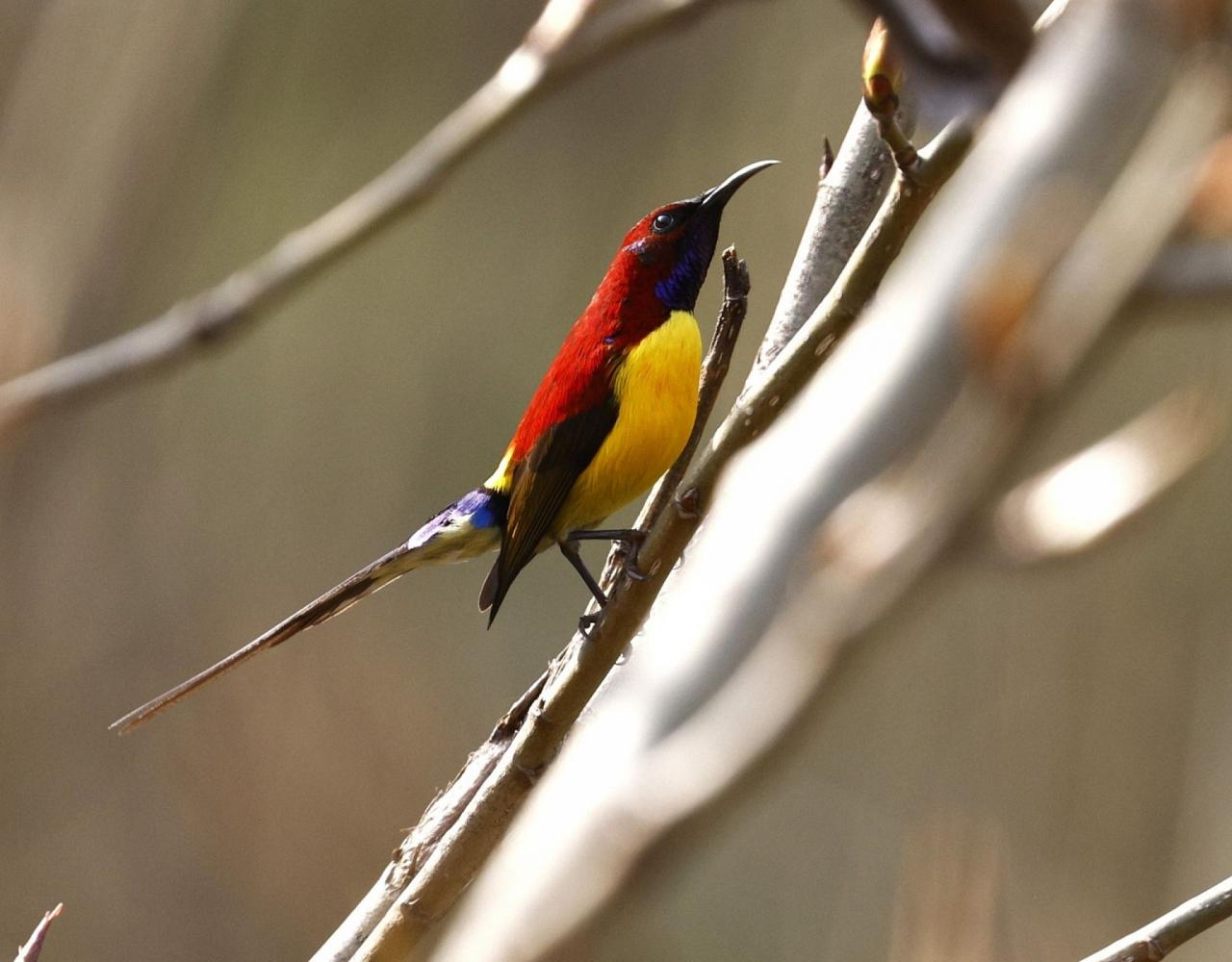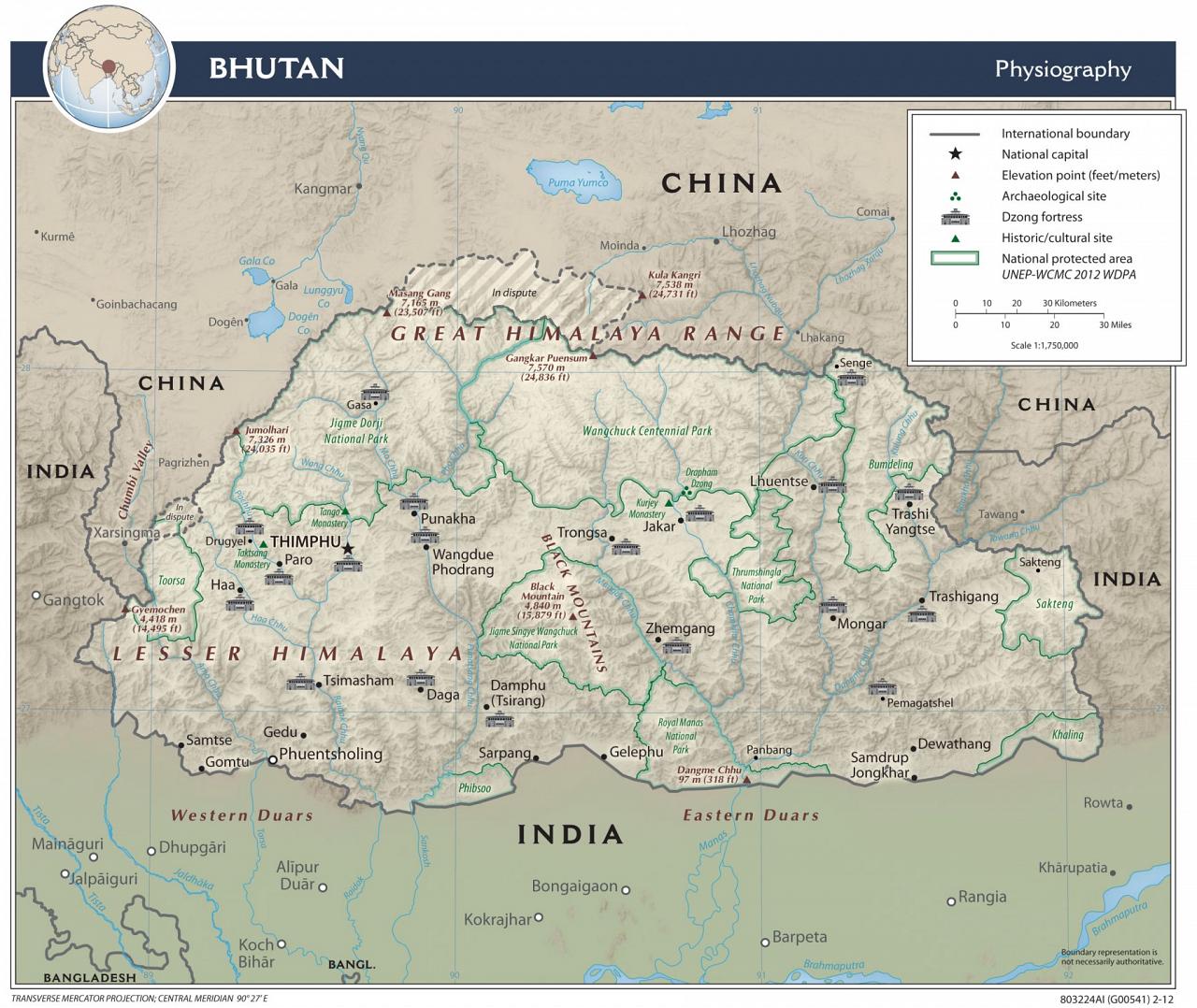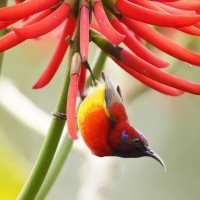- Overview
- Full Itinerary
- Extensions
- Photo Gallery
- Costing
- Travel Details
- Trip Reports
- Map
- Know Before You Go
- Other Trips You May Like
Over the past two years, our journey to the Kingdom of Bhutan has left us with so many lasting impressions. It is one of the most remarkable tours our founder, Peg Abbott, has made and in 2025 we are pleased to offer two departures, one in spring with the glory of the rhododendron bloom, and one in fall when the endangered Black-necked Cranes arrive to winter in the Phobjika Valley. We focus on prime areas for birding and scenic vistas at a pace you can absorb the wonders of the mountains — the Himalayan forests are intriguing and views abound!
Nestled between India and China, biodiverse Bhutan is home to seven percent of the world’s bird species. Roughly the size of Switzerland, it is naturally dramatic, rising from the lowland rainforest of the Indian-Malay subcontinent to Himalayan heights far above tree line, its mountains interspersed with valleys carved by fast-moving rivers. Bhutan’s elevation ranges from 315 feet to a staggering 24,500 feet above sea level.
This peaceful Buddhist kingdom is also a conservation champion, with a quarter of its lands protected by national parks and a constitutional decree that no less than 60 percent of the country should be covered in forest. More than 70 percent of it is now richly forested, an important reason some 700 birds call Bhutan home. The incredibly scenic region we travel includes many of the largest and most distinctive birds in Asia, and many riotously colorful and charismatic ones as well, including hornbills, sunbirds, parrotbills, wren-babblers and laughingthrush, to name just a few. We stay longer in the mountain areas on this trip, dropping down a bit into broadleaf forest valleys.
For the lowland species we offer an extension to Manas National Park from India, a highly recommended experience if you want to add 100+ species to your trip list. Twin parks occur with Manas and Royal Manas in India and Bhutan respectively — it’s just MUCH easier to access this habitat, and to look for specialties such as the endangered Bengal Florican from the India side. As one of the main flight routes into Bhutan connects through Delhi, it’s easy to combine the two.
Join us this spring and witness a rich array of colorful rhododendrons and other flowering shrubs as an incredibly beautiful backdrop to an impressive number of birds. There are striking mammals we hope to see too, including Giant Squirrel, the beautiful and endangered Golden Langur monkey, and even rarer Red Panda, seen twice last year on a mountain pass we crossed!
Our tour is also culturally rich, a glimpse of rural life hosted by wonderful guides that share their country’s story as well as their expertise with birds. We visit architecturally marvelous Buddhist fortress-monasteries, locally called “dzongs,” where we observe traditionally robed monks and their devotees. We stop at a weaving studio and try out one of Bhutan’s first brew pubs. Join us to learn why Bhutan is known as the “Land of the Thunder Dragon,” an emblem that adorns the national flag expressing the mysticism that pervades this fascinating culture.
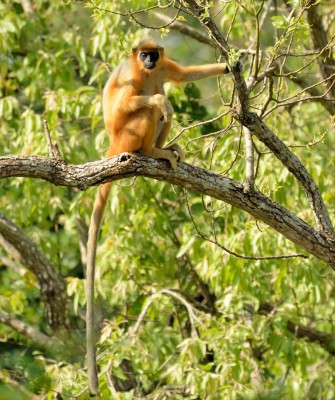
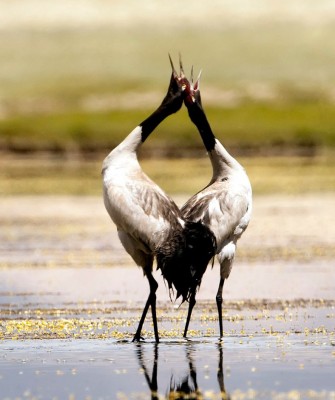
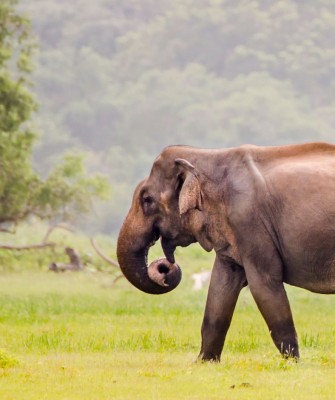
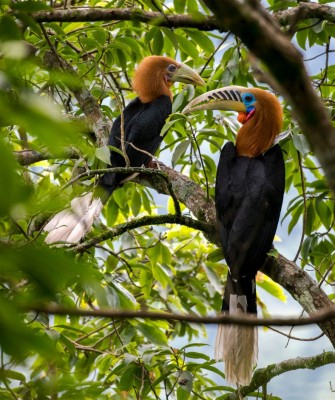
Tour Highlights
- Marvel at some of the most spectacular scenery anywhere in the world, including mountain peaks approaching 25,000 feet as a gorgeous backdrop to our birding.
- Visit at the height of the rhododendron bloom, a special experience in a country with nearly 50 species found both in the wild and cultivated in special parks in Thimphu and Punakha. Bhutan’s rhododendron season is a riot of color.
- Enjoy a tremendous diversity of birdlife thanks to our tour’s varied altitudes and habitats as we cross this Himalayan nation, ranging from lowland rainforest at 500 feet (on our extension to adjacent Manas National Park in India) to mountain passes well above tree line at 13,000 feet. Special birds here include some of the world’s largest hornbills, a half dozen species of laughingthrush, charismatic wren-babblers and parrotbills, and many glorious sunbirds.
- Marvel at bird superstars, including technicolor Himalayan Monal, Satyr Tragopan, Rufous-necked Hornbill, Fire-tailed Myzornis, Ibisbill, Beautiful Nuthatch, and gorgeous Ward’s Trogon.
- Admire traditional architecture and visit Buddhist dzongs in this highly devout country. Prayer flags flapping in the breeze are ubiquitous in the settled (not really urban) areas we visit, imbuing our journey with a unique sense of place.
- Travel adventurously with us, birding the single road that crosses this sparsely populated country, thrilling at mixed flocks in its most productive habitats close to our nature lodges.
- NEW! for 2025, we’ve added a day at a reliable site for observing White-bellied Heron in the wild, one of the most critically endangered bird in the world.
- Keep an eye on the skies for one of thirty raptors found in Bhutan, including Changeable Hawk Eagle, Crested Serpent Eagle, Himalayan Vulture, Steppe Eagle, Long-legged Buzzard, and Pallas’ Fish Eagle.
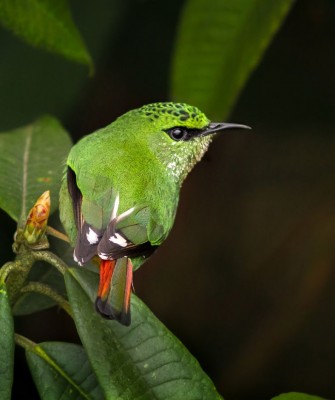
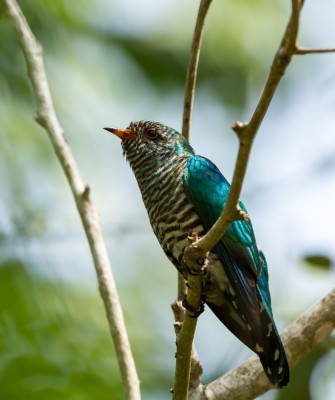
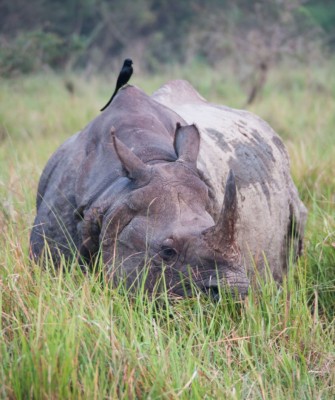
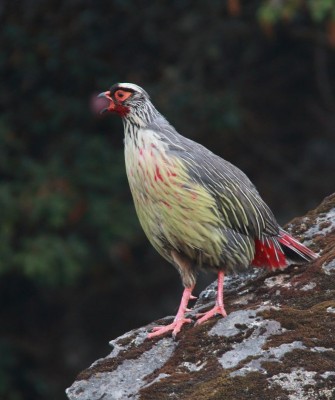
Trip Itinerary
Itineraries are guidelines; variations in itinerary may occur to account for weather, road conditions, closures, etc. and to maximize your experience.
Sat., Apr. 12 Early Arrivals: Paro, Bhutan for main tour, or Delhi, India for the Manas extension
We strongly recommend that you arrive a day early for either the tour or extension; you have flown a very long way and we want you to be rested for this amazing journey. Flights to Paro route through Bangkok or Delhi. Paro is a small city with a spectacular setting … even at the international airport, just the landing is exciting! The airport is welcoming and our team meets you and is your guide (required in Bhutan) for the early day if you wish to walk and explore in town or bird along the river.
For either the extension or the main tour, you can spend that rest night near the international airport at Delhi, India, if for the main tour this is your route, you meet our group members returning from the Manas National Park extension. Our operator can book your flight (additional cost) to fly with the group to Paro the following morning.
Sun., Apr. 13 Welcome to Bhutan! Paro | Thimphu
Paro is a lovely, small city in one of Bhutan’s most beautiful valleys rimmed by high peaks of the Himalayas. Its centerpiece is the Paro Chhu River and the impressive Rinpung (Paro) Dzong. One has the feel in Paro of ancient meeting modern, as trendy coffee shops and cafes have sprung up and you have a chance to see some of the region’s arts and crafts.
Typically the flights are very early, to work with the mountain air currents and be safe. So you arrive in the morning and have this full day in Bhutan. The airport luggage carousel is a welcoming treat and a glimpse into how much this country supports art and artisans. Those already in Paro meet up with the group flying in this morning from Delhi. The scenic drive to the capital city of Thimphu takes about an hour and a half and along the route you see classic Bhutanese architecture and some chortons and stupas, small spiritual sites. Along the river we check for Ibisbill, one of Bhutan’s iconic species. In Thimpu, we settle into our accommodations at a cool and comfortable 7000 feet. After lunch and settling in, we offer some optional birding in a forest close to the city where mixed flocks abound, giving you the first peek at good levels of bird activity characteristic on almost every stop in Bhutan. At dinner we provide an overview of our journey and for those that wish, we start our nightly species checklist to tally what we find each day.
Accommodations in Thimphu (B,L,D)
Mon., Apr. 14 Thimphu | Tsirang: Home of the White-bellied Heron
After successfully scouting this route in 2024, we have added a day to travel lower in elevation, past the hub of Bhutan’s hydroelectrical development, to a wild stretch of river still home to one of the world’s most critically endangered birds, the White-bellied Heron. Our viewpoints to scan for them are high above the river, so there is no element of disturbance and with luck we find them working on their nest or feeding in the rushing river. There are a number of other birds we hope to see as well. We learn more about conservation efforts to ensure this species survival at an active research and education-oriented Visitor Center.
While at the lower elevations, we take advantage of several roadside birding stops, and spend the night in Tsirang. This is a rich agricultural area and one of high biodiversity in the forests of the Dhampu region. We should find an excellent variety of butterflies here due to the mild climate. Common Tailorbird, Himalayan and Large Hawk-Cuckoos, White-throated Kingfisher, and Asian Barred Owlet are just a few of the many species we hope to find.
Our lodgings are simple but comfortable and put us in a great location for our next day’s birding as we continue on to Punakha.
Accommodations at Damphu Resort or similar, Tsirang (B,L,D)
Tues., April 15 Tsirang | Dhampu | Punakha
Enjoy a nice breakfast before we depart from our lodgings to travel to Punaka, with many birding stops along the way. This routing gives us a chance to visit mid-elevation mossy forests where we have an excellent chance to see Beautiful Nuthatch, a prized sighting in Bhutan. The distance is only about 42 miles as the hornbill flies, but over a three hour trip due to winding mountain roads. Other bird highlights today might include Blue-bearded Bee-eater, Rufous-necked Hornbill, Greater Yellownape, Orange-bellied Leafbird and one of the world’s smallest species, the Fire-breasted Flowerpecker. Today gives us a good chance to find several laughingthrushes and babblers, classic old-world bird families. We are also on the lookout for mammals, including Giant Squirrel and one or more species of langur.
Late afternoon, we arrive in Punakha, a scenic city defined by the impressive Punaka Dzong (Punthang Dechen Phodrang), or 'Palace of Great Bliss', the winter home of Bhutan’s spiritual leader and over 350 monks. This fortress is one of the most beautiful in the country, built in 1637 between the confluence of the Pho Chu and Mo Chu rivers. This afternoon enjoy photos from the edge of the river and a visit at a quiet time of the day to the impressive Punaka Dzong.
Accommodations at River Valley or similar at Punakha (B,L,D)
Wed., Apr. 16 Punakha | Jigme Dorji National Park
An early start from Punakha takes us to the Jigme Dorji National Park, a dramatic and beautifully scenic park of snow-capped peaks and lush mountain valleys. We bird in broad-leafed forests for a number of interesting species including Golden-throated Barbet and Black-winged Cuckooshrike. We hope to have the chance to visit Lamperi, too, looking for birds like Black Eagle, Wedge-tailed Green-pigeon, Asian Koel, Asian Emerald Cuckoo, and Nepal Fulvetta. The park is also home to the bizarre Takin, as well as 30 or so other mammals. This is a leisurely and productive route that affords us views of waterfalls, lush forests, and wildlife. Upon return, we check the river area for kingfishers, ducks, and other waterfowl.
Accommodations at River Valley or similar at Punakha (B,L,D)
Thurs., Apr. 17 Punakha | Chumey Nature Resort
This morning we pack up our gear and head on to Chumey, about six hours driving to the east. Before we leave the Punaka valley, we have a second chance at birding the Mo Chhu River in search of White-bellied Heron, Great-crested Grebe, Little Ringed Plover, various ducks, and Black-winged Stilt. Then we continue on, looking for mixed flocks on birding breaks. We hope to find Red-tailed Minla, White-tailed Nuthatch, and Black-throated Tit. We may find Dark-sided Flycatcher and Brown-flanked Bush Warbler. Chestnut-bellied Rock Thrush are quite common along the road, and we stop at several photogenic waterfalls.
Our route crosses two high passes today; at lunch we may find a herd of free-range yak and an expansive view.
Mid-afternoon we descend into the Chumay valley, a peaceful place with a mosaic of agricultural fields and farms; our lodge is of cozy log construction. As we check in, we find the cheer of a welcoming woodfire. Once settled, we gather to enjoy homemade food featuring local ingredients.
Accommodations at Chumey Nature Resort, Chumey (B,L,D)
Fri., Apr. 18 Chumey | Tharpaling Monastery
The air is fresh this morning in our little mountain retreat. The focus of our morning birding with an early departure is a drive up through forests to a clearing at the Tharpaling Monastery. For birders, this is an interesting place in addition to the cultural value. The monks here co-habit the space with Himalayan Monal and occasionally Satyr Tragopan. They can be seen close to the structures in the morning. Above us we watch for swifts and in lush shrubbery below we find a host of smaller songbird species. The views are sublime and spiritual wonder of the monastery is memorable. We return to our cozy lodge for lunch and a break.
In the afternoon you can just relax, or enjoy a walk down the rural road and birding the edges of fields and forests. Among fields of barley and newly planted potatoes, we find fat cattle, still-woolly ponies, and fruit trees in bloom. With the architecture of farmhouses rivaling that of any building seen in town, this rural tapestry creates a lovely background for finding Black-rumped Magpie, Red-billed Chough, and Gray-backed Shrike.
Return for a second delicious meal at the lodge and a chance to catch up on our species tally. This evening appreciate that your room is heated and you have a nice, locally made wooly blanket!
Accommodations at Chumey Nature Resort, Chumey (B,L,D)
Sat., Apr. 19 Chumey | Sengor
We hate to leave this place, and savor a nice breakfast at the lodge. Then it’s off to another terrific birding area at Sengor, where there are no hotel facilities and we solve that issue by having our camp crew set up a tented camp for us, with catered meals and a campfire to enjoy. The camp is at a designated site along the main road with an outhouse facility and even a small café/store. We are able to do a night walk for owls this evening, and if clear, we get a view of the stars.
Getting to our camp takes much of the day as we are birding at several good spots. We have a picnic lunch, and then we bird in forests around the camp this afternoon, and the following morning.
Camp life is simple, we have our own tents with cots and nice foam mattresses and two bathroom outhouse/tent facilities that are shared. There is a wash system set up, and wonderful meals are served right here. It’s just one night … but on our last visit everyone wished for more!
Accommodations at Sengor Campsite; Outfitter Camp Tents (B,L,D)
Sun., Apr. 20 Sengor | Yongkola
After campfire coffee and breakfast, we bird the forest by our camp, spending time in moss-draped, mid-altitude broadleaved forests of the foothills across a range of elevations. As we enter the remarkable forests, we scan the understory vegetation, stands of thick bamboo, streambanks, and the sky for a good selection of lower elevation species in superb habitat. Some of our most sought after species include Kalij Pheasant, Streaked Spiderhunter, Slaty-backed Forktail, Red-breasted Pied-flycatcher, Blue Rock Thrush, Indian Blue Robin, White-hooded Babbler, White-crested Laughingthrush, Rufous-necked Hornbill, Blue-throated Barbet, and Crested Serpent-Eagle (along with many more!).
After lunch brought to us by our mobile kitchen, we continue with a drive to Yongkola, making a few birding stops en route to our next lodge. Once we reach Yongkola, we check into Trogon Villa where we find bird-themed rooms. This evening it’s nice to compare notes with other birders at the lodge as we meet for dinner and afterwards, our checklist tally. We have three nights here in the heart of one of Bhutan’s best birding areas. Accommodations at Trogon Villa, Bumthang-Ura Hwy (B,L,D)
Mon., Apr. 21 & Tues., Apr. 22 Two Full Days Birding from Yongkola
The lodge is located close to very pristine forest, and we explore different patches of it from the same road, spending time in lush, mid-altitude subtropical broad-leafed forest, rich in moss, lichens, orchids, and ferns. This is ideal habitat for many species characteristic of the Eastern Himalayas and is one of the finest birding areas throughout the entire Himalayan chain. We search for Beautiful Nuthatch, Himalayan Cutia, Red-headed Trogon, Bay Woodpecker, Black-throated Parrotbill, Blue-bearded Bee-eater, and possibly Black Eagle. Past groups have seen Sultan Tit, Himalayan Bulbul, Golden Babbler, Gold-naped Finch, Yellow-breasted Greenfinch, Crested Bunting, Asian Barred Owlet, and more. This area throws some pleasant surprises and we may even have a chance at seeing mammals like Himalayan Black Bear or a Common Leopard if we’re very lucky.
One of our days is typically up in elevation and the other is to elevations lower than our lodge so the total mix of species is impressive. One evening from Yongkola, weather permitting, we try for nocturnal birds like Hodgson’s Frogmouth, Himalayan Wood Owl, Brown Wood Owl, and possibly a few mammals like the endemic Bhutan Giant Flying Squirrel on a night outing.
Accommodations for two additional nights at Trogon Villa, Bumthang-Ura Hwy (B,L,D)
Wed., Apr. 23 Yongkola | Trongsa
We start out early, and after some travel enjoy a full picnic breakfast, set up and catered by our wonderful team. This are not your every day picnic … there are tables and chairs and the team cooks fresh hot food for us in the field. Fresh flowers adorn the tables and they always seem to be around the bend waiting for us just as our energies falter. We love this Bhutanese hospitality on wheels!
There is prime birding at the subtropical forests between Yonkola and Namling; over the course of the day we gradually head to Trongsa. This one-night stop breaks up what was a long travel day on past trips, and the lovely hotel we have chosen is a good rest stop. It has a view of the historic Trongsa Dzong.
On arrival, you can settle into your room and enjoy the ambiance and views. Some may wish to visit the town market and center, for ATM use or other errands. In the evening we gather for dinner and the checklist tally. Some may want to try to photograph the Tronsa Dzong at night as it is spectacularly lit.
Accommodations at Hotel Yankhill, Trongsa (B,L,D)
Thurs., Apr. 24 Trongsa | Phobjika
We get an early start as we have about a morning drive to our next stop, crossing back over Pele La Pass. Our destination today is Phobjika, a lovely timbered valley with extensive wetlands in several patches. This is where Black-necked Crane spend the winter and while we are too late in the year to see them, we enjoy seeing crane-themed signs and artwork and witnessing the local conservation support. Along our drive, our picnic lunch is set up with a fine view.
Once in Phobjika, we visit a conservation center for Black-necked Cranes. While they are not likely to be here this late in the spring, you should be able to see one or two captive birds that were rescued but cannot migrate on site. There are displays and a film and a fine overview of the valley.
Some may wish to organize a hot stone bath at a local farmhouse, a rustic but soothing experience. Others can relax and enjoy our lovely lodgings.
Our “tents” feel much more like hotel rooms, with nice furniture and full baths. They leave a light footprint on the landscape and have a stunning view. Dinner tonight is at the main lodge of the facility and by the nice wood-fueled stove, we finish the day with our checklist tally.
Accommodations at a Gangtey Luxury Tented Camp, Gangtey (B,L,D)
Fri., Apr. 25 Phobjika | Old Pele La Road
This morning we head out early, wanting to be in the magic of morning activity on the old Pele La Road, one of the best birding spots of our trip. We hope to hear and see the gorgeous Satyr Tragopan, and should also find Blood Pheasant, and Himalayan Monal — a pheasant family extravaganza! The smaller species hold excitement too, and are plentiful. Mixed flocks are common and Darjeeling and other woodpeckers fly between massive trees, often calling. We may find Green Shrike Babbler, Scaly-breasted Cupwing, and a host of warblers, tits, and yuhinas in mixed flocks. We have the full morning to walk and bird and take in this stunning setting. Rhododendrons should be at their peak of bloom. As we depart, there is a craft market on the pass we can stop at if you wish … you can even try yak cheese!
This afternoon we can enjoy some down time at the lodge, and local birding in this beautiful valley in the late-afternoon.
Accommodations at Gangtey Luxury Tented Camp, Gangtey (B,L,D)
Sat., Apr. 26 Phobjika | Royal Botanic Gardens | Dochula Pass | Paro
We have our breakfast at the lodge and head off to bird and explore the route to Paro — the total drive is about 5 hours with several good stops..
We are not in a hurry, and we plan to stop near Thimphu at the national weaving center where we can see artists at work and perhaps purchase a woven treasure. Heading up Dochu La Pass, at the Royal Botanical Garden, we walk a loop trail among blooms of wild strawberries, violets, gentians, rhododendrons, and magnolias. At lower elevation than the pass, we can find other species of laughingthrushes (Chestnut-capped, White-throated, and Gray-sided), Rufous-crowned Babbler, both Large Hawk-Cuckoo, Himalayan Cuckoo, and colorful Rufous-bellied Woodpecker. We marvel at colorful butterflies and with luck could find a Large-eared Pika, one of six species in Bhutan.
From the gardens, we continue to climb up Dochu La Pass. We top out at 10,335 feet, which, weather permitting, provides us with fabulous views of Bhutan’s seven highest Himalayan peaks, all above 23,000 feet. Here the 108 Memorial Stupas stand impressively. On the grounds we find mixed flocks at the forest’s edge. We bird in lush forests of pine, rhododendron, and evergreen oak, and with luck we see a number of interesting birds like the Fire-tailed Myzornis, Yellow-billed Blue Magpie, Chestnut-capped Babbler, and Ultramarine Flycatcher. We also have a chance for Indian White-eye, Gray Bushchat, Blythe’s Leaf Warbler and the showstopping Mrs. Gould’s Sunbird. Noisy laughingthrushes may be present (White-throated, Chestnut-crowned, and Spotted), as well as White-collared Blackbird, Green-backed Tit, Whistling Warbler, Large-billed Warbler and Rufous-throated Fulvetta. With luck we could find a troop of Himalayan Gray Langur.
By late afternoon we arrive in the town of Paro with its trendy shops and cafes; it seems another world from the rural areas we’ve explored. Our dinner tonight is at a fun local restaurant and brewpub.
Accommodations at Hotel Olathang, Paro (B,L,D)
Sun., Apr. 27 Paro | Chele La Pass Birding or Hike to Tiger’s Nest
We have one more incredible day of birding, and we head out early to climb Chele La Pass to the west of Paro. We want to spend time in semi-alpine forests where we have a chance to see White-winged Grosbeak, Himalayan White-browed Rosefinch, Blanford’s Rosefinch, and both Gray-crested, and Rufous-vented Tits. With luck we may find pika and Yellow-throated Marten. We bring a picnic breakfast with us.
Those that are fit and want an incredible hike on your final full day in Bhutan can opt to hike with a guide up to the iconic Tiger’s Nest, a stunning complex of monasteries nestled into a dramatic cliff. There is a tea house to rest along the way, amazing views and a sense of history waiting for you on this inspiring and spiritual experience.
Late afternoon we visit a wetland looking for Black-tailed Crake. If for any reason we have not had good views of Ibisbill, we can work along the river with very good chances to find them. This is the start of their nesting season and we may find a pair with a chick!
Over dinner we share the many highlights and favorite birds of our trip and we do our final checklist tally.
Accommodations at Hotel Olathang, Paro (B,L,D)
Mon., Apr. 28 Departures
Today our flock disperses. We have breakfast and time airport runs for departing flights. (B)
Pre-Tour Extension
Itineraries are guidelines; variations in itinerary may occur to account for weather, road conditions, closures, etc. and to maximize your experience.
Mon., Apr. 7: Early Arrivals, New Delhi
We are met at the airport and transferred to this delightful and modern airport hotel to get settled and rested up from your journey. If anyone wants to do sightseeing or explore nature areas around Delhi, requiring more days, we can put you in touch with our local operator (your guide for the tour) for custom planning. This night is at additional cost but highly recommended so you are rested up for this amazing journey, whether the extension or main tour. The hotel we book is lovely with a full restaurant and bar and a lovely courtyard with swimming pool. No meals are pre-arranged as travelers are often resting, but for those that wish we can meet for dinner informally at 7 PM.
Tues., Apr. 8: Arrivals in New Delhi | Flight to Guwahati, Assam
Our extension officially starts this morning with an early morning flight. Some of our group may arrive in Delhi at dawn and continue on with us on the domestic flight. We do worry about tight connections so HIGHLY recommend you come in the day ahead if you can.
The flight is early, so we plan to take a packed breakfast from the hotel to eat after you have checked into your flight to Guwahati. This flight is included with the extension and we fly as a group – hopefully we see the high Himalayas en route!
Once in Guwahati, we are met by drivers for the drive to Manas National Park (about three and a half hours). There are birds right from the start and we stop along the route as time permits.
Depending on our flight time, lunch may be en route or at the lodge in Manas. We want to be sure to be there in time for our afternoon jeep safari at Manas National Park. Bird highlights in travel may include Asian Palm Swift, White-throated Kingfisher, Green Imperial Pigeon, Rufous Treepie, and Crimson Sunbird.
Safaris into the park can be very good for mammals as well as birds. Highlights may include Indian Rhino, Asian Elephant, Indian Gar, and though rare, this is a Tiger reserve and we have found tracks in past years. We may find Lineated and Blue-throated Barbets, Red-collared Dove, Green-billed Malkoha, Black-naped Monarch, Himalayan Flameback, and Gray-capped Pygmy Woodpecker.
Accommodations at Thobgang Jungle Tourist Lodge, Assam (B,L,D)
Wed., Apr. 9: Full Day Safari, East Side of Manas National Park
Enjoy the sunrise in India! This morning we head to a grassland section of the park. The habitat is open and we look directly into neighboring Bhutan with mountains that rise above the Manas River that outlines the border. We hope to find Bengel Florican, a critically endangered and impressive member of the bustard clan. In spring, they leap into the air and vocalize, making it possible to find them so we are here at a good time. Golden-headed Cisticola gleam in the sun, perched up on emergent stalks taller than the main grassy areas. We search for Siberian Stonechat, both Ashy and Plain Prinias, and four species of babblers: Striated, Slender-billed, Yellow-eyed, and Chestnut Capped. Changeable Hawk Eagle patrol above along with the more common Oriental Honey-Buzzard. In wet areas we can pick up Red-wattled Lapwing, Lesser Adjutant, and Asian Openbill. Wild Peacock (Indian Peafowl) call and display from tree tops, memorable!
We return to the lodge for lunch and in the afternoon go into the forested part of the park close by on a safari drive. Asian Fairy-bluebird and two lovely minivets, Scarlet and Rosy, brighten the forest with color. This is a great area for several species of green-pigeon, which enjoy flowering trees alongside Red-breasted Parakeet. Silver-breasted Broadbill nest here and mixed flocks abound.
Accommodations at Thobgang Jungle Tourist Lodge, Assam (B,L,D)
Thurs., Apr. 10 - Fri., Apr. 11: West Side of Manas National Park
The first day, we cross over to the other side of the park to check in to a different lodge for two nights and to enter and explore from a different gate. Travel through local villages is fun, watching the buzz of local life. Collared Falconet are agile small predators that feed on butterflies. The first morning we bird the edge of the park and rural areas, wetlands, the second we drive deep into the forest. There is so much to see in Manas!
On both days we have lunch at our lodge and go back out for afternoon safari. Our route in from the gate parallels the river, and we make a few side turnoffs to see what we can find. Likely candidates include Fulvous-breasted Woodpecker, Puff-throated Babbler, White-rumped Shama, and Small Niltava. Long-tailed Broadbill, Asian Barred Owlet, and Kalij Pheasant are all possible. Inside the park we find extraordinary lushness to the forests, with activity at a level of a bird explosion, it’s spring! We may find both Greater and Black-rumped Flamebacks, Black-winged Cuckooshrike, Velvet-fronted Nuthatch, and the usual mix of drongos, bulbuls, and warblers. Chestnut-headed Bee-eater show off their array of color, and here we can find Great Hornbill — absolutely incredible birds, not unlike the New World toucans. Rufous-necked Laughingthrush might feed on tracks of the dirt roads we travel while Bengal Monitor Lizards sun themselves on trunks of trees.
We have an excellent chance to see mammals here, including Asian Elephant. Dinners are at the lodge.
Accommodations at Musa Jungle Lodge, Assam (B,L,D)
Sat., Apr. 12: Return to Guwahati | Flight to Delhi
We enjoy breakfast and one last drive into the park, perhaps spotting Red-headed Trogon. We return to pack up and drive back to Guwahati where we board afternoon flights to New Delhi. We are met at the airport and return in time for dinner and to join those coming in for the main tour that chose to route through Delhi. Bhutan here we come!
Accommodations at Andaz Aerocity, New Delhi (B,L,D)
Cost of the Journey
Cost of the journey is per person, based on occupancy: $8190 DBL / $8990 SGL, from Paro*. Tour cost includes all accommodations; all meals as stated in the itinerary; group airport transfers; ground transportation in a Toyota Hiace; professional guide services; park, preserve, and other activity fees; and miscellaneous program expenses.
Tour cost does not include: roundtrip airfare to and from Paro, or items of a personal nature such as laundry, porterage, telephone charges, or alcoholic beverages, overstay expenses arising from weather or COVID reasons or other unforeseen situations. Tour cost also does not include the Bhutan tourism fees (at present, $100 per person, per night) or your visa cost (2024 pricing was $40).
*If you choose to come into Dehli and fly with the extension group to Paro, our operator can book that round trip flight (Dehli to Paro to Delhi) for you and we can add it to your invoice.
Cost of the Manas extension is per person, based on occupancy: $2990 DBL / $3375 SGL and includes the internal flights (Dehli - Guwahati - Dehli - Paro).
A note about the cost of this trip: This is an expensive tour. Bhutan limits tourist visits and links visas to the use of an authorized local operator and by requiring local operators to charge a minimum per person per day for even basic services, with a portion of that going back to the government. A visit to Bhutan is a privilege, we do pay for it in the tourism fees.
Travel Details
Please plan to make air travel plans only after the minimum group size has been met. We will send you a confirmation email as soon as the trip has been confirmed.
Arrival and Departure Airport: Paro International Airport (PBH) or, if you would like our operator to book your flights to and from Paro, you will book round trip flights to and from Indira Gandhi International Airport (DEL). Please let us know if you would like us to book your Paro flights for you.
Arrival Details: Please plan to arrive on April 12, 2025, at your leisure. It is important to arrive a day early to rest up from your travels.
Please note, there is only one Drukair (Royal Bhutan Airlines) flight in and out of Paro from Delhi each day. Our operator can book your Paro arrival flight on April 13th via Indira Gandhi International Airport (DEL) in Delhi, India to travel with our group members returning from the Manas National Park extension, as well as your departure flight back to Delhi.
Departure Details: Please plan international flights to depart Paro on April 28, 2025, after 11:00 AM. If you plan to fly in and out of Delhi, please plan international flights after 8:00 PM.
Travel Tip: We highly recommend you add the pre-tour extension as it will give you a better understanding of the lowland habitats, which we do not visit in Bhutan. This is a perfect pairing that will add 100+ species to your list! The guide will be the same on both tours and will make logistics easy for getting to the main tour start in Paro.
If you arrive early in Paro to rest up from your travels, we can book you an early night at a hotel in town where it’s easy to walk around and explore. If you arrive early into New Delhi, we can book a room for you at the Andaz Delhi by Hyatt. If you want to see a bit of the city of New Delhi, our operator can arrange a tour for you on a custom basis.
Entry Requirements: See "Essential Information" section under the "Know Before You Go” tab.
Items of Note
Please expect a fair amount of walking in Bhutan, and note altitudes below. Daily activity starts at 0500 hours, with breakfast at 0700 hours, followed by birding until about 1030 hours. We break then have lunch at around 1230 hours and then birding resumes till 1600 hours. We plan evening birding on two or three different days.
Elevation of Accommodations
Gangtey — 3050 meters / 10,000 ft
Sengor — 3,000 m / 9842 ft
Ura Hwy/Bumthang — 2,800 m / 9,185 ft
Thimphu — 2,350 m / 7,710 ft
Trongsa — 2,200 m / 7,215 ft
Paro — 2,250 m / 7,382 ft
Punakha — 1,310 m / 4,300 ft
High Passes – Altitude
Chele la — 3988 metres / 13,083 ft
Thrumsing la — 3780 metres / 12,401 ft
Yotong la — 3425 metres / 11,236 ft
Dochu la — 3100 metres / 10,170 ft
Browse below for trip reports and species lists from past versions of this and other tours from this destination.
Bhutan
- April 2023
- April 2024
Essential Information +
Pace & Protocols +
Packing List +
Suggested Reading List +
Useful Links +
Photo credits: Banners: Thimphu, Bhutan, Dr Vikramjit Kakati via Creative Commons; Golden Langur, M. Swarnali via Creative Commons; Rufous-necked Hornbill by Rohit Naniwadekar via Creative Commons; Great Buddha Dordenma, Christopher J. Fynn via Creative Commons; Female Great Hornbill Debrup Chakraborty via Creative Commons; Golden Eagle Photo Credit/ Avijit Sarkhel; Black-throated Sunbird by JJ Harrison via Creative Commons. Thumbnails: Golden Langur (NJ Stock), Black-necked Crane (NJ Stock), Asian Elephant (NJ Stock), Rufous-necked Hornbill (NJ Stock), Fire-tailed Myzornis (NJ Stock), Asian Emerald Cuckoo (NJ Stock), Indian Rhino (NJ Stock), Blood Pheasant (NJ Stock)







